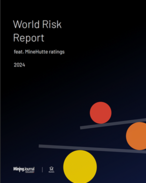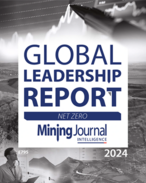This article is 5 years old. Images might not display.
Iron ore fine output was 11% lower on the year to 72.9 million tonnes, while pellet production was 12.2Mt, down 5%.
Quarterly iron ore fines and pellet sales volume also fell 20% on the year to 67.7Mt due to seasonal weather impacts, production stoppages following the Brumadinho dam rupture, new inventory management procedures at Chinese ports impacting the timing of sales revenue recognition, and abnormal rains impacting shipments from the Ponta da Madeira port in the Northern System in Brazil.
These factors were partially offset by inventory drawdowns from Chinese ports during the March quarter.
Vale said 81% of total sales was premium products, practically in line with the December quarter.
It said iron ore fines and pellet quality premiums reached US$10.7 per tonne in the March quarter, slightly lower than the previous three-month period's $11.5/t, "mainly due to lower market premiums for Carajás fines, which were partially offset by the positive impact of new contract terms for pellets sales".
The miner's finished nickel output fell 6.5% year-on-year to 54,800t, with Vale citing scheduled maintenance at the Matsusaka and Dalian refineries impacting production from PTVI in Japan and VNC in China. Nickel production from Sudbury also dropped due to timing differences in the nickel processing chain.
Quarterly copper production was steady year-on-year at 93,800t, while cobalt production fell 10% to 1,195t and coal output dropped 9% on the year to 2.2Mt after extremely severe rains throughout the quarter.
Weather also hit Vale's manganese ore output, which dropped 16% on the year to 365,000t.
The company kept most full-year guidance unchanged, including its iron ore and pellet sales guidance of 307-332Mt, although dropped nickel from 244,000t to 232,000-236,000t and copper from 417,000t to 407,000-417,000t.
BMO mining analyst Edward Sterck summed it up as a "bad quarter … and not just for iron ore", with production numbers significantly missing expectations across the board.
Iron ore fines production missed BMO's forecast by 16%, pellets by 3%, nickel by 9%, copper by 11%, cobalt by 10% and coal by 28%.
Meanwhile, iron ore sales missed the bank's estimate by 20% and the realised price premium of $5.60/t over the 62% Fe benchmark fell short of BMO's forecast of $8.30/t.
"While nickel and copper guidance has been downgraded slightly, we see the greatest downside risks to iron ore, given ongoing post-Brumadinho challenges, and to coal, where the impact from recent rains could drag on an already delayed ramp-up," Sterck said.
"We think Vale's parlous position makes it vulnerable to immediate perceptions, with the potential for the stock to trade lower today on the back of the results," he said.
BMO did not downgrade Vale on the results, keeping it at "market perform" with a target price of $13 per share.
Bernstein analysts were more positive about the results, saying the impact of Brumadinho had been slightly lower than expected.
Vale's iron ore fines production volume bears out Bernstein's forecast of 70.2Mt, but sales were under its 72Mt estimate.
"Today, we have been able to see the production impact of the Brumadinho-related closures for the first time.
"[The] results do not materially affect our thesis on Vale and we maintain our outperform rating," Bernstein said.
In Brazil, Vale's shares were trading at BRL49.06 (US$12.46)/share Wednesday morning, down 1.29%, while in the US, shares were 0.48% lower at $12.43/share.

























